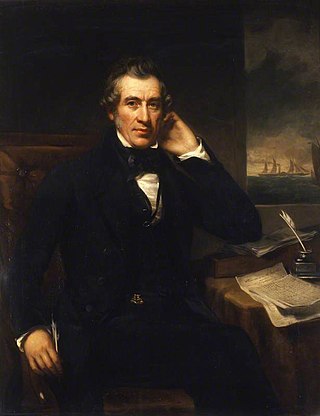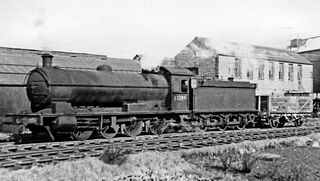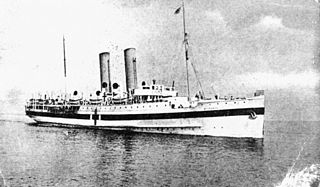Bibliography
Notes
- ↑ Mechanical World and Metal Trades Journal 1911 , p. 131
- ↑ The Daily Telegraph 1915 , p. 11
- ↑ "• View topic - Southampton - 1820".
- ↑ Studio International Art 1918 , p. v
- ↑ The Timber Trades Journal and Saw-mill Advertiser 1913 , p. 613
- 1 2 Woollacott 1994 , pp. 31–32
- ↑ Spooner 1921 , p. 68
- ↑ Institute of British Foundrymen, Welsh Engineers' and Founders' Association & Foundry Trades' Equipment & Supplies Association 1935 , p. 116
- ↑ The Times 1952 , p. 7
- ↑ Shipping World 1960
- ↑ "Rail UK Locomotive Scrapyard". www.railuk.info. Retrieved 13 July 2022.
- ↑ Hunt, John. "Ultimate Survivor How NELPG saved Q6 No. 63395". Press Reader. Steam Railway. Retrieved 29 March 2019.
- ↑ "63395 (NER 2238, LNER 3395 & BR 63395)". Preserved British Steam Locomotives. WordPress.com. 9 July 2017. Retrieved 4 November 2020.
Related Research Articles

Sir William Fairbairn, 1st Baronet of Ardwick was a Scottish civil engineer, structural engineer and shipbuilder. In 1854 he succeeded George Stephenson and Robert Stephenson to become the third president of the Institution of Mechanical Engineers.
Ernest Frank Guelph Cox (1883–1959) was a British engineer, with knowledge in electrical and mechanical engineering, which he notably deployed in marine salvage. Between 1924 and 1931 his Cox & Danks Shipbreaking Co. successfully raised 35 ships of the German Imperial Navy High Seas Fleet that had been scuttled at Gutter Sound, Scapa Flow, in 1919. A tough but caring employer, after a series of fatalities and accidents to his employees, Cox sold his marine salvaging business to the Alloa Shipbreaking Company in 1932. He remained a consultant to the British Admiralty throughout his remaining career, and retired in the early 1950s after selling his profitable scrap metal business to Metal Industries Group.

Vulcan Iron Works was the name of several iron foundries in both England and the United States during the Industrial Revolution and, in one case, lasting until the mid-20th century. Vulcan, the Roman god of fire and smithery, was a popular namesake for these foundries.

HMS Prince of Wales was one of six 121-gun screw-propelled first-rate three-decker line-of-battle ships of the Royal Navy. She was launched on 25 January 1860.

A foundry is a factory that produces metal castings. Metals are cast into shapes by melting them into a liquid, pouring the metal into a mold, and removing the mold material after the metal has solidified as it cools. The most common metals processed are aluminum and cast iron. However, other metals, such as bronze, brass, steel, magnesium, and zinc, are also used to produce castings in foundries. In this process, parts of desired shapes and sizes can be formed.

The North Eastern Railway Class T2, classified as Class Q6 by the LNER, is a class of 0-8-0 steam locomotive designed for heavy freight, especially for hauling long coal trains to various collieries in the North Eastern region of the UK, with a maximum speed of 40 miles per hour. 120 were built at Darlington Works and Armstrong Whitworth between 1913 and 1921 to the design of Vincent Raven, based on the NER Class T and T1. The batch of fifty built by Armstrong Whitworth from 1919 were A-W's first locomotives to be built, after the conversion of their Scotswood works from ordnance to peacetime production.
William Fairbairn and Sons, was an engineering works in Manchester, England.
Dick, Kerr and Company was a locomotive and tramcar manufacturer based in Kilmarnock, Scotland and Preston, England.

The Blyth Shipbuilding & Dry Docks Company Ltd. was a British shipyard located in Blyth, Northumberland, England.
SS Antenor was a UK steam turbine passenger and refrigerated cargo liner launched in 1924. She was the third of five ships to bear the name.

SS Armadale Castle was a passenger steamship built in 1903 at Fairfield Shipbuilding and Engineering, Govan, Scotland, for the Union-Castle Mail Steamship Co Ltd, London, the first ship ordered for the newly formed company.

HMS Racer was a Royal Navy Mariner-class composite screw gunvessel of 8 guns.

Robinson Thwaites was a nineteenth-century mechanical engineer and mill-owner in Bradford, Yorkshire. His companies included at different times Robinson Thwaites and Co, Thwaites and Carbutt and Thwaites Brothers.
Metal Industries, Limited was a conglomerate of mostly British engineering companies. It was founded in Glasgow in 1922 by Robert Watson McCrone. In 1953 its activities were described as "electrical and mechanical engineering manufacture and metal trading" In 1967, Aberdare Holdings of South Wales acquired a controlling interest in the group, but was quickly thwarted when M.I. created a large tranche of new shares which it sold to Thorn Electrical Industries, giving Thorn overall control of the company. The City Panel on Takeovers and Mergers referred to "abuses and inequities" that occurred during this chaotic takeover, among others at the time, but declined to recommend tougher regulations. A good history of the company's shipbreaking activities was published by the World Ship Society in 1992 in Ian Buxton's "Metal Industries: Shipbreaking at Rosyth and Charlestown".

Thos. W. Ward Ltd was a Sheffield, Yorkshire, steel, engineering and cement business, which began as coal and coke merchants. It expanded into recycling metal for Sheffield's steel industry, and then the supply and manufacture of machinery.

TrSS St George was a passenger vessel built for the Great Western Railway in 1906.
Sidney Castle was an English businessman and amateur cricketer. He played five first-class matches for Kent County Cricket Club between 1890 and 1893. He worked professionally in the ship breaking business throughout his life and was an influential breeder of fox terriers.

Edward Daniel Meier was an American mechanical engineer, and President and chief engineer of the Heine Safety Boiler Company, known as president of the American Society of Mechanical Engineers in the year 1911–12.
West Hika was a Design 1013 cargo ship built in 1919 by the Los Angeles Shipbuilding & Dry Dock Co of Los Angeles. She was one of many ships built by the company for the United States Shipping Board.
HMS Southampton was the third ship of the Royal Navy to carry the name Southampton. She was a fourth-rate, 52-gun ship. She was one of the six Southampton-class frigates.
References
- Institute of British Foundrymen, Welsh Engineers' and Founders' Association; Foundry Trades' Equipment & Supplies Association (1935). "Hughes Bolckow". The Foundry Trade Journal . 52. Institute of Cast Metals Engineers.
- The Daily Telegraph (15 February 1915). "H.M.S. Britannia – The Passing of an Historic Ship". The Daily Telegraph. ISSN 0307-1235. OCLC 49632006 . Retrieved 16 February 2015.
- Mechanical World and Metal Trades Journal (1911). "Mechanical World". Mechanical World and Metal Trades Journal. 50.
- Shipping World (1960). "Shipping World". Shipping World. 142.
- Spooner, Stanley (January 1921). "Marske by the sea Aerodrome Acquired". Flight – the Aircraft Engineer & Airships. XIII (631). Royal Aero Club of The United Kingdom. ISSN 0015-3710 . Retrieved 16 February 2015.
- Studio International Art (1918). "Antiques". Studio International Art. 75–76. National Magazine Company.
- Woollacott, Angela (1994). On Her Their Lives Depend: Munitions Workers in the Great War . University of California Press. ISBN 9780520914650.- Total pages: 241
- The Timber Trades Journal and Saw-mill Advertiser (1913). "The Timber Trades Journal and Saw-mill Advertiser". The Timber Trades Journal and Saw-mill Advertiser. 74 (1936–1948). W. Rider & son.
- The Times (4 September 1952). "The Times". The Times. London, UK. ISSN 0140-0460.